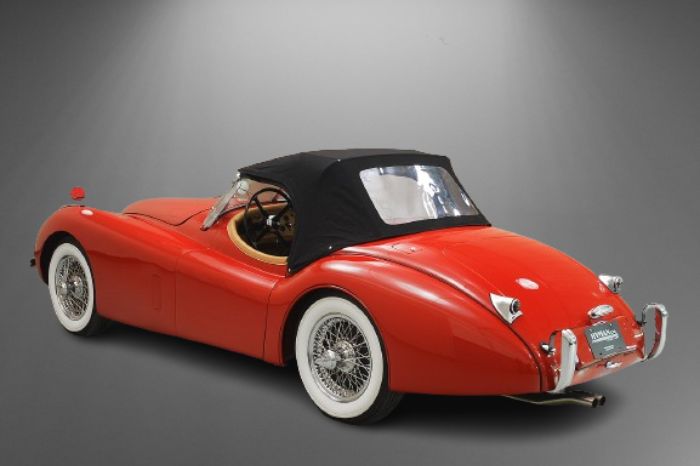1952 Jaguar XK120 Features

The 1952 Jaguar XK120 boasted a combination of innovative features that made it a groundbreaking sports car in its time.
Engine and Performance:
- 3.4-liter DOHC Inline-Six: The heart of the XK120 was its advanced 3.4-liter, dual overhead camshaft inline-six engine. This engine, producing 160 horsepower, was a marvel of engineering for its time and propelled the car to a top speed exceeding 120 mph, justifying the “120” in its name.
- Four-Speed Manual Transmission: The power was delivered through a four-speed manual transmission, offering a direct and engaging driving experience.
- Independent Front Suspension: The XK120 featured an independent front suspension with coil springs and wishbones, providing agile handling and improved ride comfort compared to traditional leaf spring setups.
- Drum Brakes: While not as sophisticated as modern disc brakes, the four-wheel drum brakes offer adequate stopping power for the car’s performance capabilities.
Design and Interior:
- Aerodynamic Design: The XK120’s flowing lines and low stance were not just aesthetically pleasing but also contributed to its aerodynamic efficiency, essential for achieving its high speeds.
- Three Body Styles: Initially available as a two-seater roadster, the XK120 later expanded to include a fixed-head coupe (FHC) and a drophead coupe (DHC), catering to different preferences for open-air or enclosed driving experiences.
- Leather Interior: The interior, though spartan by modern standards, featured comfortable leather seats, a wood-rimmed steering wheel, and a simple instrument cluster with essential gauges.
- Limited Amenities: Compared to modern cars, the XK120 lacked many amenities like air conditioning, power windows, or advanced sound systems, focusing on a pure driving experience.
Additional Features:
- Optional Extras: Several optional extras were available, including fog lamps, luggage racks, radios, and upgraded suspension components, allowing owners to personalize their XK120.
- Evolutionary Changes: Throughout its production, the XK120 saw minor changes, including the switch from an aluminum body to steel for wider production and the introduction of a heater as standard equipment in 1952.